PHILOSOPHY + CREATIVITY
Stop imagining a poetics of everyday life and make it happen.
Become a camel, then a lion, and then a child, and then begin again, until death.
- Henri Lefebvre
Nomadic Lifestyle
by VJEKO SAGER
The outside of philosophy is a wasteland fit only for nomads. - Immanuel Kant
The ultimate goal of life is to find out what “drives us”... Yet, this is easier to say than to realize, as our path is filled with obstacles and doubts. Despite all odds, some of us continue to pursue their inner calling. Creativity is one of those vocations that brings permanent sense of wonder and drives the mind ahead of the body. Creative lifestyle means to refuse excuses and follow the drive.
![]()
Drawing at the cafe’s is my daily habit, allowing me to keep the mind, hand and eye in coordination. The smell of coffee and ambient noise provides a perfect space for high levels of concentration and I know I am in the zone when everything around me ceases to exist.
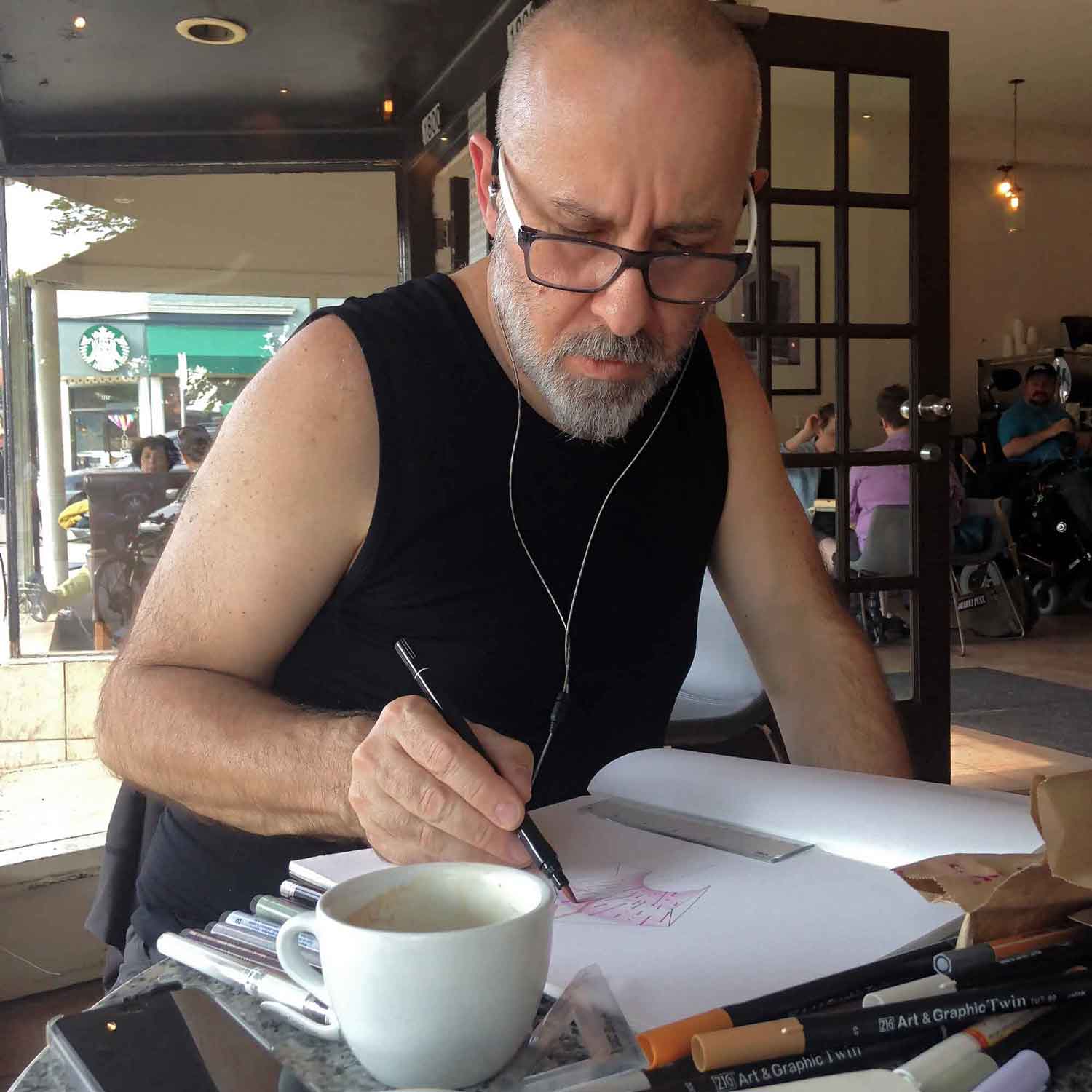
Drawing at the cafe’s is my daily habit, allowing me to keep the mind, hand and eye in coordination. The smell of coffee and ambient noise provides a perfect space for high levels of concentration and I know I am in the zone when everything around me ceases to exist.

I start drawing without ever knowing what will happen and I enjoy the thrill of seeing the image drawing itself, appearing through the whiteness of the paper. This sensation is similar to excavating an idea or being present at it’s birth.
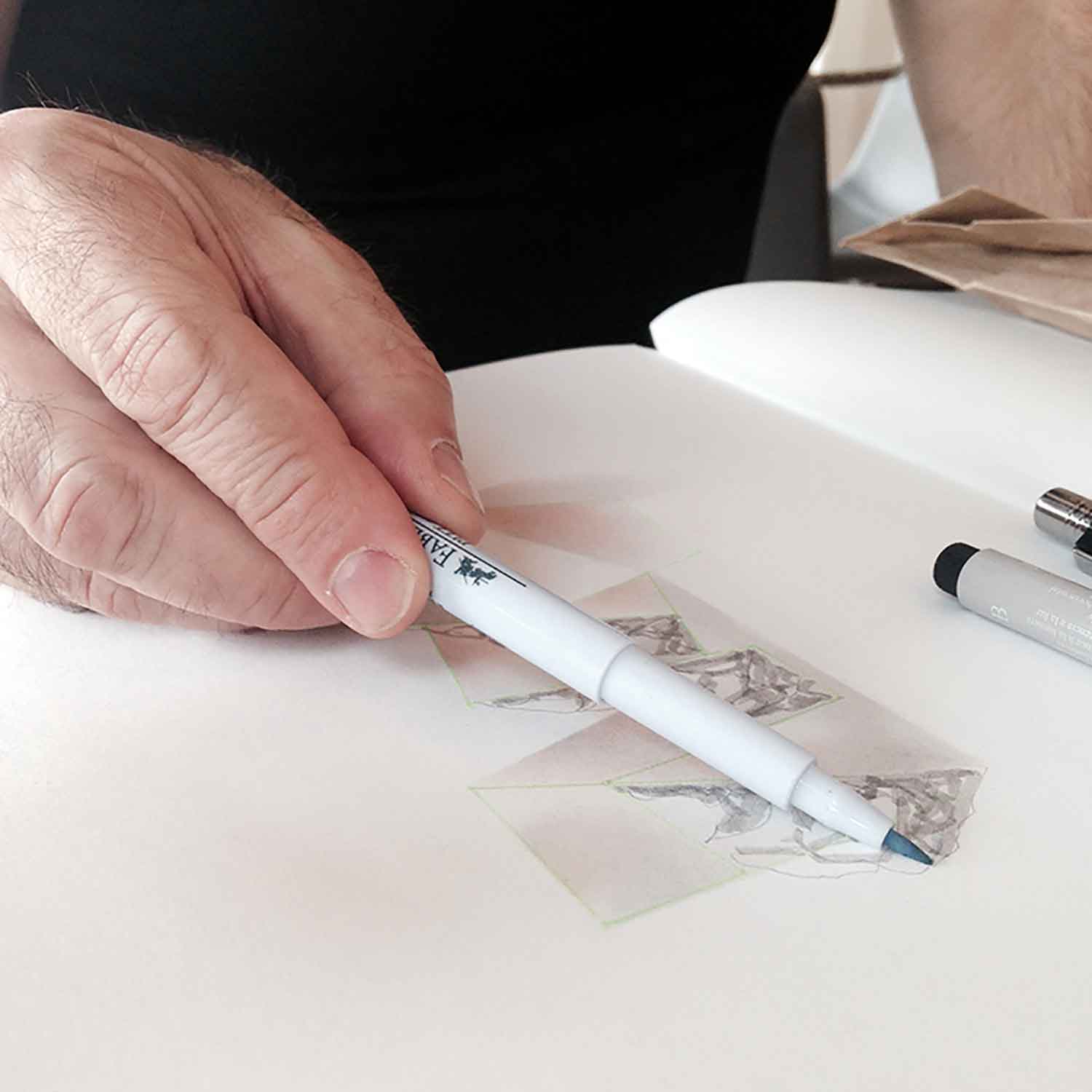
Every idea asks for a different treatment and I am often changing drawing methods and instruments to allow particular image to appear in its purest form. This way I adapt all my knowledge and skills to serve the occasion, like a surgeon that cuts or restorer who heals some precious object.
Outside Studios
Early summer breeze at the Alice Lake (near Squamish) was flipping through my papers, like fingers of some curious & invisible creature...
![]()
Water was brought from the lake and trees provided a perfect screen for a midday light.
![]()
It is absolutely divine, to be at the source of inspiration, away from civilized disruptions. Every line absorbed this freshness and marks on paper appeared as sharp as pine trees...in contrast with muddy colours of stones washed out by eternal rains.
![]()
It is impossible to copy nature, and I will never understand those who desperate pretend to “capture” natural beauty. All experiences fall short in conveying smells, vibrations, temperature and other innumerable ingredients that are burried beyond perception, like infinite memories of the summer.
![]()
Eastern wisdom teaches us that art stands in the middle in between perception and imagination and image is the place where memory and vision overlap.
photos by Amona RA
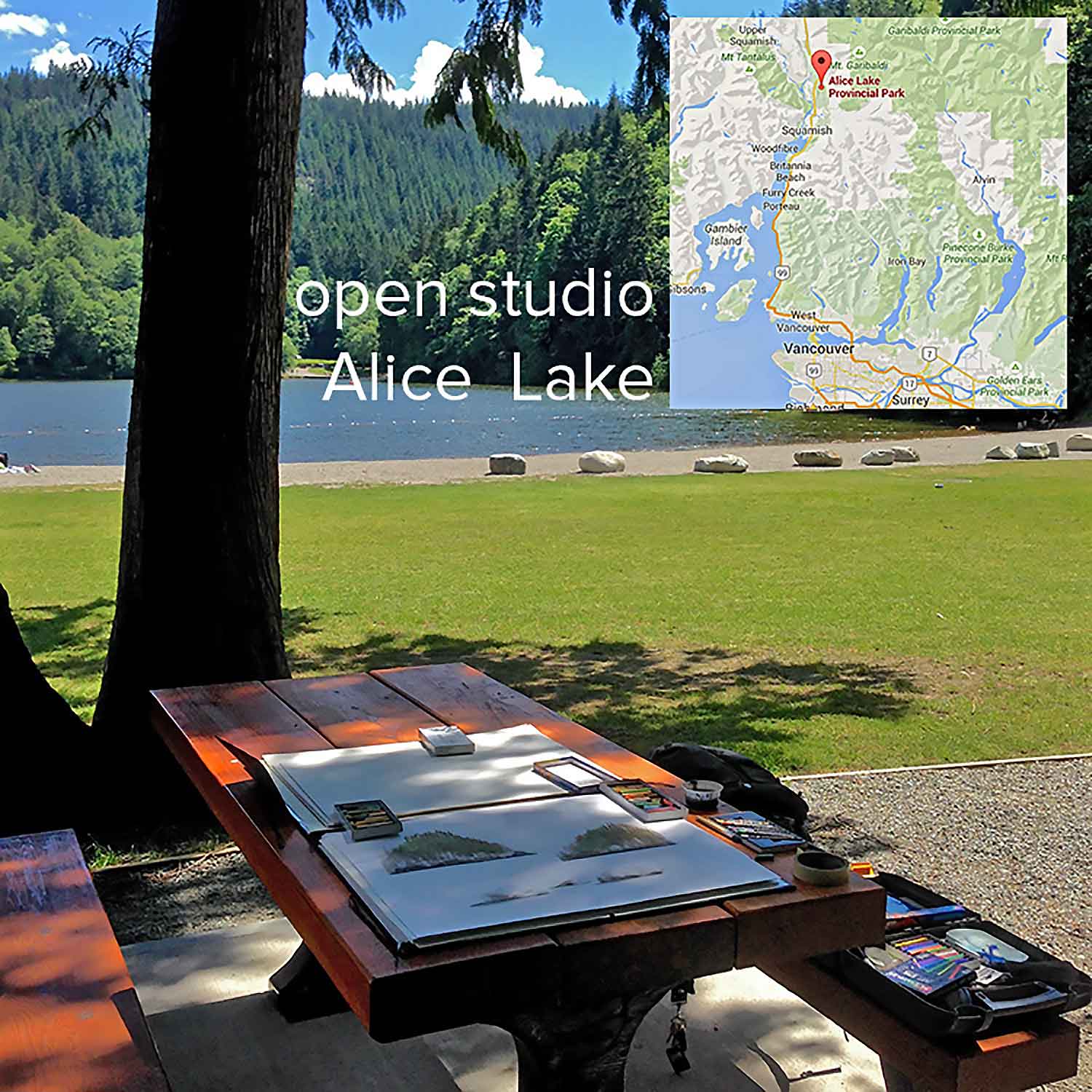
Water was brought from the lake and trees provided a perfect screen for a midday light.

It is absolutely divine, to be at the source of inspiration, away from civilized disruptions. Every line absorbed this freshness and marks on paper appeared as sharp as pine trees...in contrast with muddy colours of stones washed out by eternal rains.

It is impossible to copy nature, and I will never understand those who desperate pretend to “capture” natural beauty. All experiences fall short in conveying smells, vibrations, temperature and other innumerable ingredients that are burried beyond perception, like infinite memories of the summer.

Eastern wisdom teaches us that art stands in the middle in between perception and imagination and image is the place where memory and vision overlap.
photos by Amona RA
Drawing Thoughts
by VJEKO SAGER
“Do not fear mistakes. There are none.” – Miles Davis
Errare humanum est
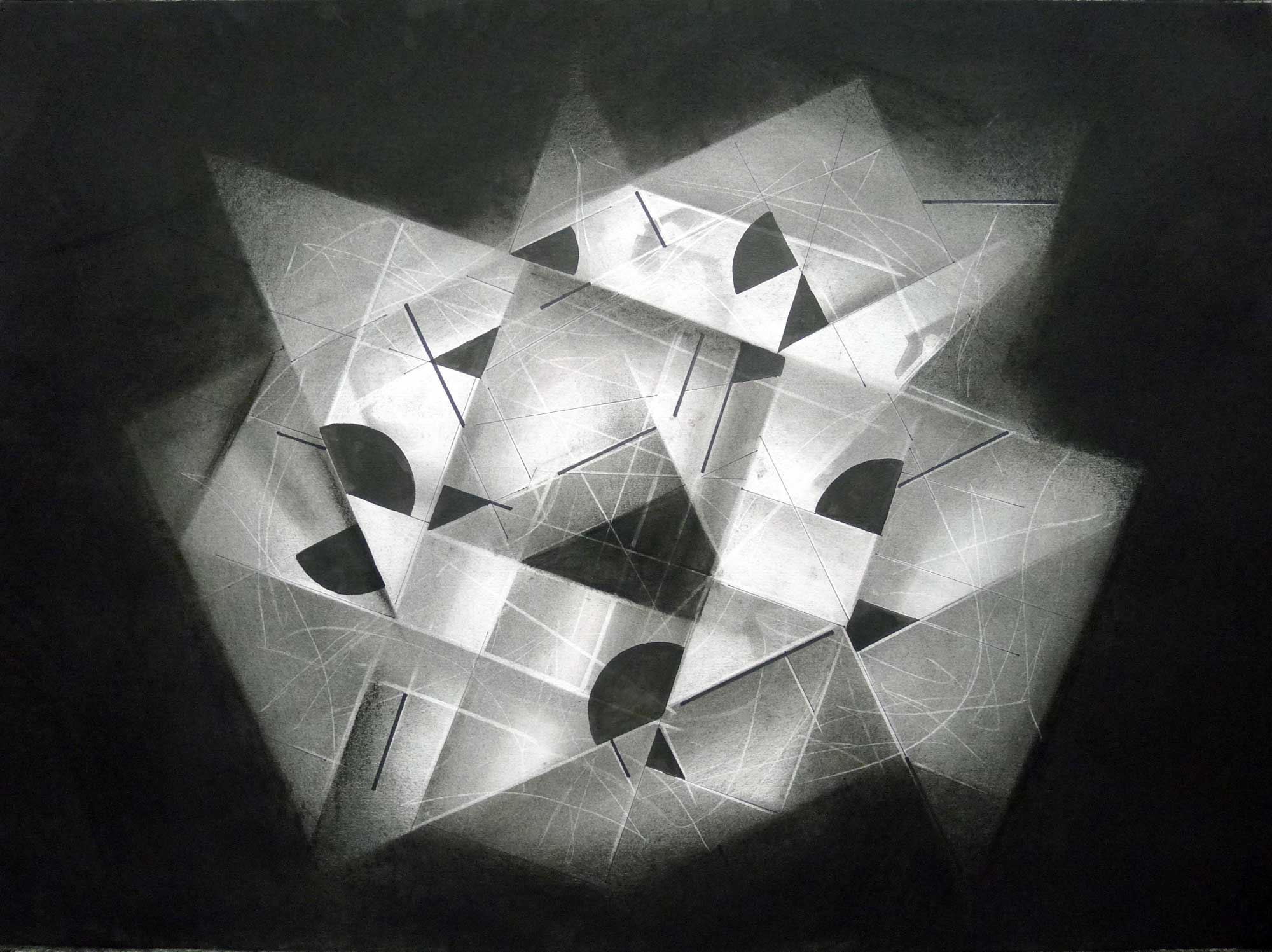
Unplugged
It is the impossible to digitalize serendipity. Drawing generates delicate washes and scratches that cannot be translated into binary code. It requires intuition, chance, skills, inspiration, response, accuracy, emotion, speed and slowness at the same time. Delicate yet passionate, drawing is practiced by individuals who have capacity to produce maximum results with least amount of tools. Drawing is the most genuine medium of all, due to it’s simplicity.
Drawing Future
Drawing carries creative seeds of the future.
It opens our senses to perceive the nuances of time. While drawing, we are in the zone where laws of nature are bended, distorted and paradoxically confronted. There is no now when you exit time.
True question is not what to draw, but what not to draw. - V. Sager
Sketching Thoughts
by VJEKO SAGER
There is nothing that man fears more than the touch of the unknown - (Canetti 1981, 15/13)

The end of memory
We live in times that will be remembered as the age of contradictions: we claim technological advancement and face the loss of nature, praise interactions and remain isolated more than ever before, engage in multitasking and crave for creative authenticity. Those who experienced this world before digitalization, had different experience of living. Living involved all senses, things were tangible, encounters memorable. Time was relevant and people were talking to each other. The end of history is nothing but the end of memory. As Google became a synonym for memory, nobody needs to remember a thing.
Miss Emily Carr used to advise young artists to: “Be careful that you do not write or paint anything that is not your own, that you don't know in your own soul.” (Klee Wyck, 1941)
Lost time
Sketching is one of those practices that requires absolute presence. Not only because it connects mind, eye and hand, but because it requires a somatic time. A time to stop and reflect, take a (critical) distance and allow fresh ideas to enter the mind. Sketching brings back the sense of presence.
Flatland
Rectangle is the rarest form that exists in nature, yet it appears to be the most common shape of anything we make, from buildings, screens to sheets of paper. The autocracy of rectangle confines creative freedom by imposing compositional rules. Due to two dimensional - planar thinking, most images turn naïve and flat.
Flatness stands for “void of time” and this is the reason why technology seems to compresses space and time into a “permanent now”, or permanent flatness.
Art is an immersive sensation and it is essential to overcome binary thinking and implement the notion of time which liberates space from flatness and allows mind to perceive all wonders of perception.
Escape form Flatland
The main reason for creative block is inertia. Changing spaces means changing times. Creative energy depends on perpetual flow of ideas and their transformation into actions & events.
Aristoteles’s Lyceum was a peripatetic (school of walk), which practiced walking while studying, similar to many notable schools that followed this idea.
Creative nomadism brings freshness to the mind, as all senses are activated and engaged by motion. Sometimes, mind can travel without body, as Deleuze and Guattari indicate: “You can sit still and be a nomad. Nomadism is a way of being”. (Capitalism and Schizophrenia, A Thousand Plateaus,1980)
Sketch or draw
They may seem to be alike, but there is a considerable difference in between sketching and drawing. Sketching is a conversation with oneself, an attempt to see what we think. Drawing is more ambitious, as it aims to communicate ideas and intentions with others. For this reason, drawing often has an autonomous life, while sketches remain safely guarded and intimately compiled into sketchbooks.
Creative nomad
My sketching practice depends on many factors and each of them is important in some unique way. It is possible to draw with anything, but certain fetishism surrounds drawing instruments and their treatment. Every paper determines a particular choice of media and demands a distinct drawing strategy. Some papers invite and other reject, some seduce and some are treacherous. Having all this in mind, one has to get ready to resist, let go, fall in love or ignore. It is not easy to be a nomad, to make a mark on paper.
Coffee culture
Coffee plays an important role in my drawing and I love the smell and noise of the coffee shops, which serves as a sealant for my creative bubble. As a part of the sketching ritual, I usually dip my brushes into coffee to add warm and delicate brown washes to the drawing. Ambient noise buffers my ears and I cannot hear a sound while I am in the “zone”. My drawings wouldn’t be possible without coffee.
Transubstantiation
Conceptually, my sketches act like a signage on the road, showing me which way to go and which directions to avoid. As my interests and intentions vary, drawing remains the only medium which allows me to perceive the invisible and capture the impossible.
There is a good reason why Greek word “idea” translates as “form”. Over the years, I’ve seen thousands of my ideas appearing on paper, engraved, revealed, imprinted, spilled, scratched, or gently rubbed. Some turned to be unique and memorable and some caused despair. Some rushed to emerge and others tried to escape. My sketchbooks remain a genuine evidence of my creativity, reminding me of seized and missed opportunities to understand who I am.
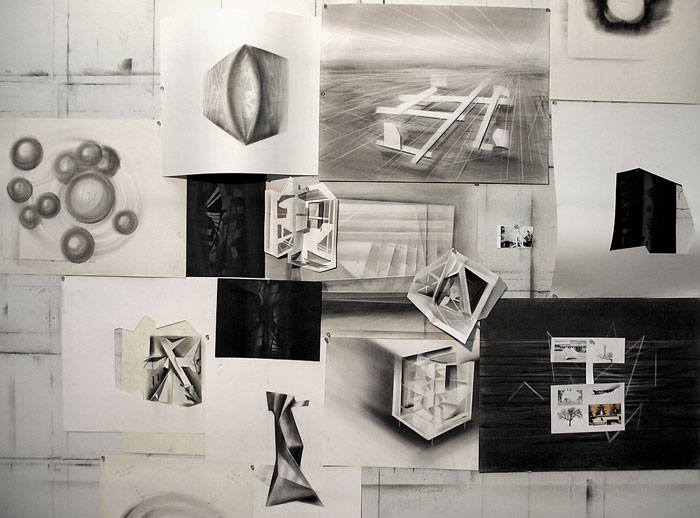
Drawing exposes bad things in people. - Leonardo da Vinci
In the Name of the Image
by VJEKO SAGER
imago = likeness = eikōn = icon = image = imagination = picture = painting = symbol
Image :: terminology
Imago (imagi-nation) is mental image based on memory. Similarly as JPG files, memories are compressed for easier retrieval. We often forget that images are stored as complex recollections, involving inner (emotions) and external factors (space-event). Imagination may be regarded as retrieval of these imago-memories which generate new (imaginary) images.
Photograph
What most people call image is not an image but a photograph. Photon-graphos (engraving with light) mimics reality, because it imitates our way of seeing. Actually, photograph is as far from reality, as it captures abruptly reflected light. To call photograph “real” is the ultimate reversal of truth.
Icon
Acheiropoieta was a term for miracolous images “not done by hand”, which magically appeared on the surface. Icon is a symbolic image, which traditionally attains power beyond comprehension. Nevertheless today’s icons are called small digital interface buttons with magic powers of another kind.
Ancient Greek εἴδωλον (eídōlon, “image, idol”), from εἶδος (eîdos, “form”)
Icon is in fact eidolon or idol, originally from Greek word eidos which means form. In this sense eidos also means idea (form), or better to say mental picture.
Picture
Ancient cultures refer to a picture as a threshold between mind and nature. Made by hand, often using paint (pictura), picture is merger of perceptive and mental resemblance. This kind of image-making is still present in Oriental arts (ink-based painting). Sumi-e and similar styles are based on combination of observation, memory and intensive practice, maintaining creativity at the level of meditation.
Digital glare
We should pay attention when speaking of images, making sure the term relates to visual sensation we try to describe. That’s why it is important to say that technology-generated “images” (a.k.a. digital pictures) and not images at all. They are binary codes (electromagnetic bits) which are stored and retreived by software which uses light that emanates form the screen (pixels) to project the invisible algorithm. Images made with light have magical powers and that’s the reason behind addiction and dependence on glaring screens.
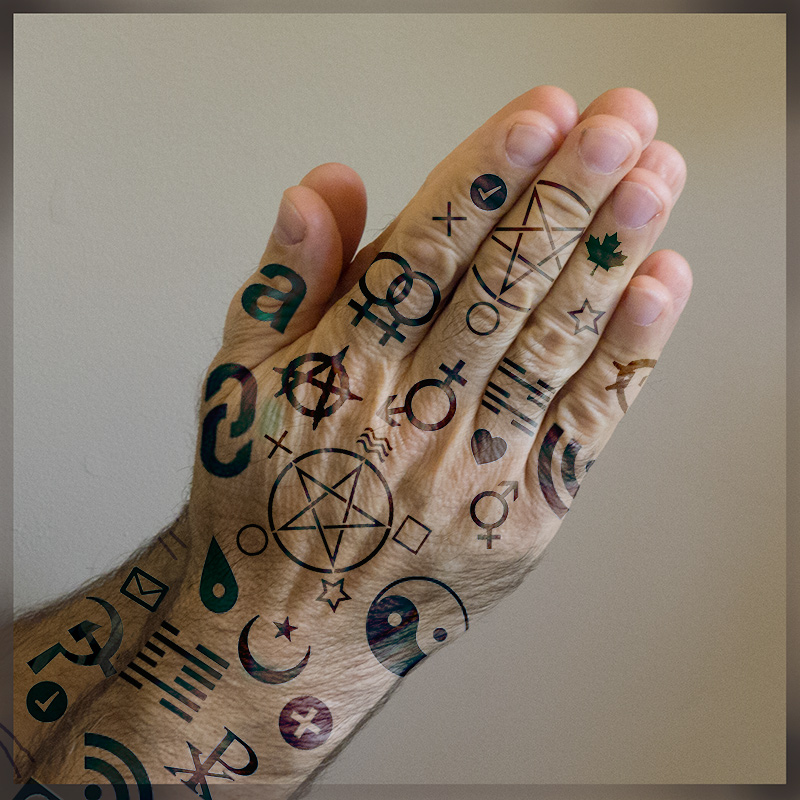
Death of Light
by VJEKO SAGER
PERIPATETIC photography
per·i·pa·tet·ic/ˌperēpəˈtedik/1. traveling from place to place, in particular working or based in various places for relatively short periods.
Ancient schools of philosophy praticed thinking, walking and talking, in order to keep body and mind agile. Walking with a camera provides perfect perspective of the world, allowing constant change of scenery and opportunity to perceive nuances, sporadic events and capture visual curiosities. Photography is the best tool to capture memories...yet, photography is a DEATH OF LIGHT, as photons “die” while “engraving the image”.
I use photography as a prosthetic of vision, which allows me to retain what would otherwise be a fleeing moment. In this sense, I search for visual paradoxes, moments of synchronicity and weirdness, residues and fragments of life, neglected, rejected and unimportant imprints, evidence of events and complex entaglements of trivial things. Photography is the best evidence of visual thinking, as there is nothing in between mind and image, but a shutter.
Decision to press a shutter reveals the state of mind.











Acheiropoieta
by VJEKO SAGER
Made Without Hands (and variants) — are Christian icons which are said to have come into existence miraculously, not created by a human.
In the old days, before darkness wrapped the Earth, artists used their arts to worship the Light. Every step of art making served only one purpose: to purify the soul. Purification requires sacrifice. Painting process started with a preparation of the sacrifitial surface, using mixture of skin glue and white chalk. Polished by hand, gesso would become smooth and hard like a bone. Afterwards, artist would grind, filter and clean pigments, until they achieve their purest state. Pigments will be mixed with egg emulsion, symbolizing unification with the Sun. Coloured dispersion would be applied with a soft sable brush using gentle gestures to announce the idea. White gesso would absorb and intensify semi- transparent colours that will never be mixed in between themselves, but laid devotionally on top of each other. Every step of the process would be performed through meditation, allowing mind to forsee every possible result and choose the right one. Painting will guide artist, not the other way around. Finished painting would never be signed, as signature represents the ego that exercises dominance over the spirit. The artist was “a slave of the arts”, merely guided by an invisible hand.
Acheiropoieta is an image that reflects painter’s soul.
In Memory of Painting
- silver leaf & oil on canvas 6 x 2 feet
Vjeko Sager 2003
Acheiropoieta is an image that reflects painter’s soul.
In Memory of Painting
- silver leaf & oil on canvas 6 x 2 feet
Vjeko Sager 2003
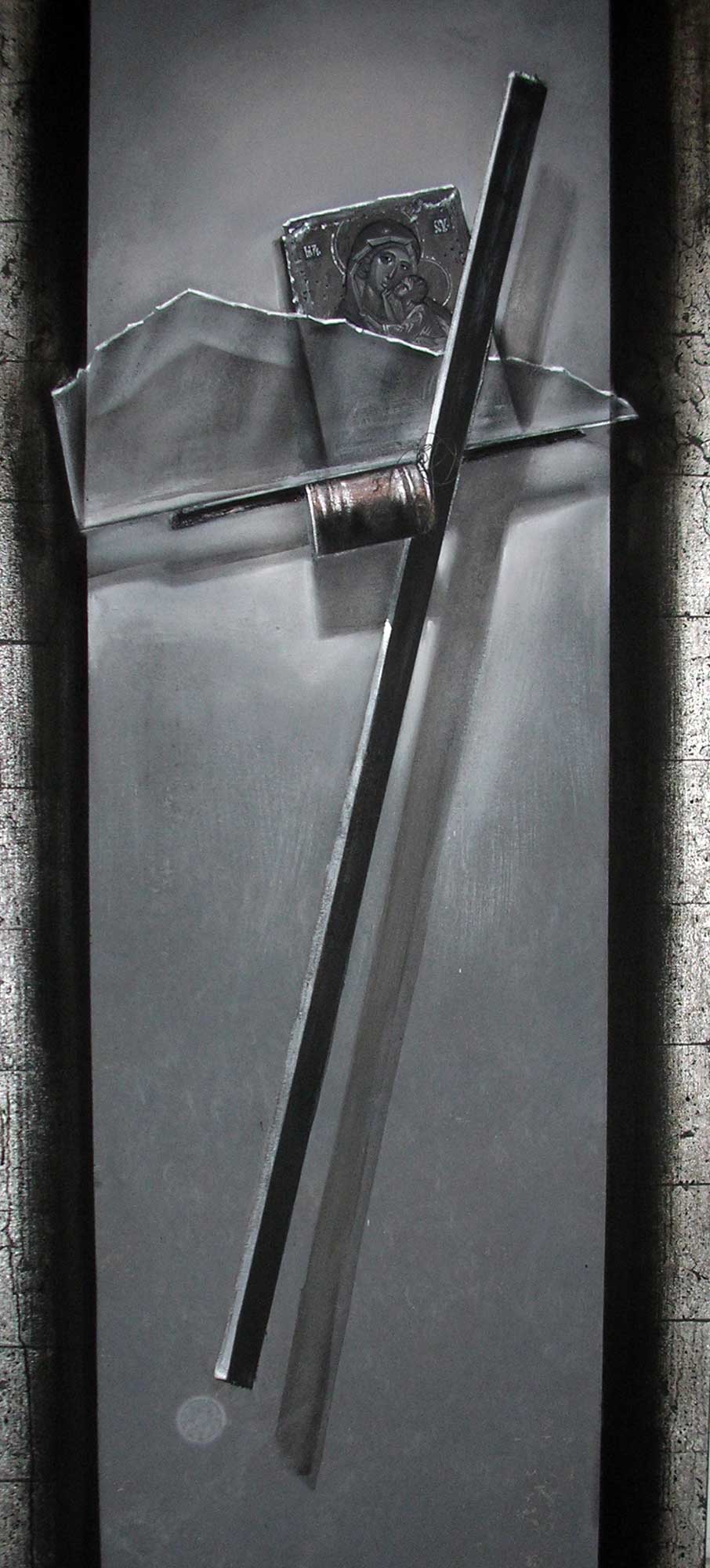
Ignorance is fearless.- V. Sager
Jump Into Void
by VJEKO SAGER

empus neminem mane
/ time waits for no one /Archeology is not a science of the past, but of the future. Further we look into the past, better we can envision the time to come. Unfortunately, most of us look back only in moments of desperation and to make things even worse, we rarely analyse the present. Without past there is no now. This is the reason why future seems to be scarry, doomed and dangerous.

Dimidum facti, qui coepit, habet
/ once you’ve started, you’re halfway there /Drawing draws itself.

Omnia cause fount
/ everything happens for a reason /What do you see in this picture? Alien’s message? Prisoner’s signature? Secret code? Nothing?
Knowledge stops before logic and logic stops before intuition. The way we perceive the world depends on the capacity to link and identify things, but knowledge often goes as far as the reason or intellect can go. Then, there is nothingness, this empty void, cold and distant…which conceals what actually exists. Who is willing and brave to step into nothing?

Salire in vacui
/ jump into voidEvery moment provides an opportunity to escape. Before we jump into a void, we have to free ourself from prejudices, norms and regulations. The power of will is nothing but this crack in time, a fleeting moment, a chance to take action. The power that turns impossible into possible.
Particles Without Theory
by VJEKO SAGER

stencil letters + 12 years old dust in my studio
Dust is everything and nothing at the same time. As particles float through space, they gather memories of events into neglected corners of the mind. Dead cells fall on the ground mixing with dirt, remainings of plants, animals and minerals, making undefined chaotic amalgamations. Dust carries memories of its origin like a code which keeps the meaning of time. Each particle which once belonged to someone, will again become a property of someone else. This way, memory is kept eternally, connecting everything and everyone. Dust is entropy. It breathes the bad memories into the winds, gets us sick and spreads diseases. Later on it feeds the ground with fertile ideas which generate creative impulses. Dust slowly and patiently measures hours and days, millenia and eons. Dust should to be worshipped, like every memory... and same as a memory, it dissapears and reappears at an instant, allowing us to capture glimpses of eternity.

© Vjeko Sager :: all rights reserved